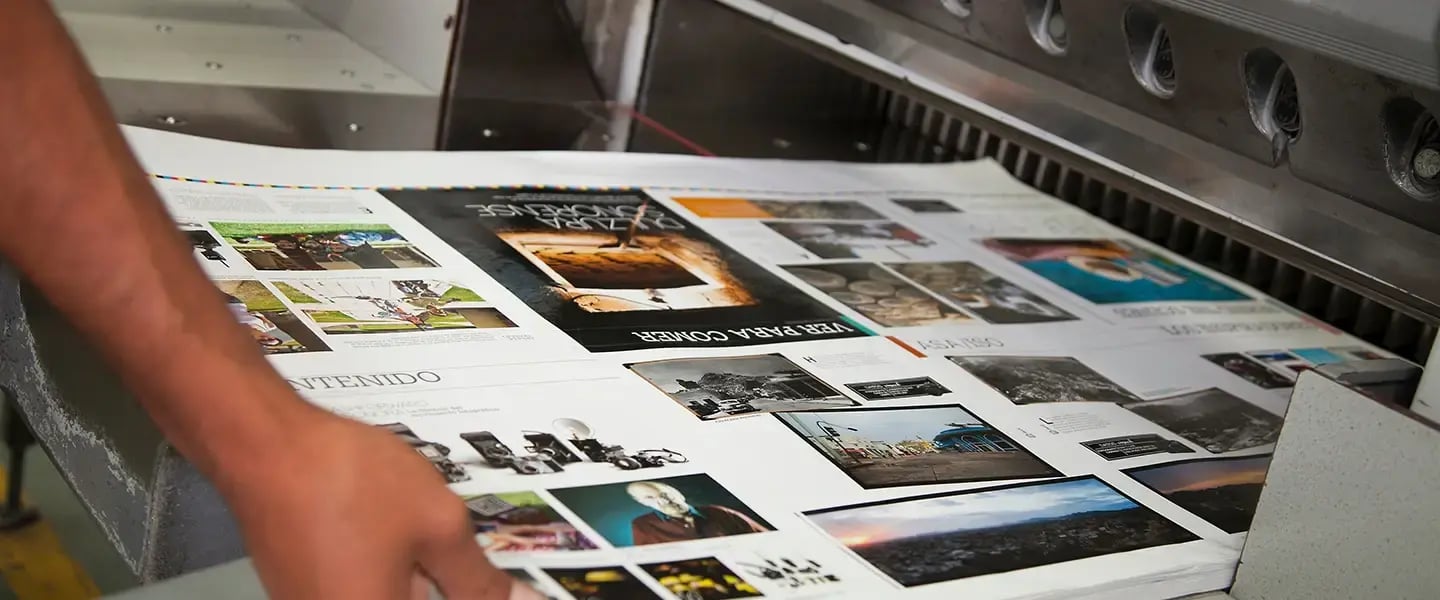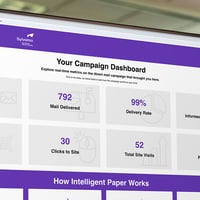Why Designers Should Specify the Paper Their Project Will Be Printed On
 It probably goes without saying that your choice of paper plays a large role in the final outcome of your project. The appearance, feel and function of your piece can hinge on paper selection, and while your printing partner is a valuable resource in helping you decide on the right paper for your application, there are likely many instances where you understand better than anyone why specifying certain kinds of substrates over others will better achieve your project’s aim.
It probably goes without saying that your choice of paper plays a large role in the final outcome of your project. The appearance, feel and function of your piece can hinge on paper selection, and while your printing partner is a valuable resource in helping you decide on the right paper for your application, there are likely many instances where you understand better than anyone why specifying certain kinds of substrates over others will better achieve your project’s aim.
Whether it’s choosing a paper that’s better aligned with your brand voice or target audience, designers who have the information and insight to specify the ideal paper for their project will be able to oversee a project from design to print, and will also be better prepared to think creatively in the event their print partner experiences supply difficulties or shortages.
With this in mind, let’s look at a couple of examples where a designer’s ability to specify the paper their project will be printed on can help increase the overall effectiveness and impact of the piece.
When a heavier paper stock can add more weight and meaning to your project
The tactile nature of print goes a long way toward helping your audience engage in a deeper, more meaningful way, and the tangible nature of print has demonstrated the ability to increase information retention and recall. Choosing a heavier paper stock than what your print partner typically suggests for applications such as direct mail can help create a more high-end piece that carries more weight, meaning and value.
For example, specifying cover stock for a direct mail campaign that positions a targeted, high-value offer can help give your mailer more pop and differentiate it from others in your audience’s mailbox.
Specifying papers with heavier basis weights, or a wider variety of finishes compared to the house sheet your print partner provides, can also offer opportunities to incorporate different specialty finishes or inks without worrying about show-through or bleeding. For example, specifying papers with heavier basis weights and compatibility with specialty finishes can help restaurants print high-quality menus designed to eventize the dining experience and delight their customers.
When you need more opacity
The opacity of paper refers to the transparency of the sheet, or the amount of light that is able to shine through the page. The average house sheet many printers offer has an opacity ranging from 80% to 98%, but specifying a substrate with a higher opacity can help you design projects that can handle more ink coverage with less risk of show-through.
This is particularly applicable with commercial print materials like instructional manuals, booklets and sell sheets, each of which can require a large number of black-and-white or even full-color images. Specifying a premium uncoated paper with a high enough opacity to print double-sided sheets with both text and images can help you optimize your print spend, and it also allows for more creativity in terms of how each page is designed or laid out.
For designers who want to specify sheets with high opacity, Accent® Opaque Text is a premium uncoated sheet with superior opacity — and 97 brightness — to help produce the highest quality print for any number of commercial uses.
When sustainability is at the top of your priority list
The continued push for more sustainable practices in the print industry is inspiring printers to stock sustainably harvested and produced papers, but specifying sustainably sourced paper at the beginning of the conversation with your print partner can help avoid delays or bottlenecks due to product availability issues. Plus, knowing what to look for when specifying products like recycled paper can help ensure your project is printed in accordance with your sustainability goals.
You may want to specify paper that uses some percentage of post-consumer fibers to help reduce your reliance on virgin wood fibers. For example, Accent® Opaque RE-30 is an uncoated sheet that uses 30% post-consumer fiber without sacrificing the ability to print high-quality, full-color pieces.
You can also specify a sheet that carries specific sustainability certifications.
The Sustainable Forestry Initiative (SFI) is a global organization that recognizes paper sourced from sustainably managed forests. SFI certified paper has been produced under the philosophy of end-to-end stewardship of the natural world, which in turn can help you meet your print sustainability goals.
Similarly, the Forest Stewardship Council® (FSC®) recognizes paper that has been responsibly harvested and manufactured, but the FSC takes things one step further by focusing on fair labor and wage practices, ethical social and community standards and biodiversity preservation.
Regardless of what you’re trying to achieve, specifying Accent Opaque Text and Cover can help you unlock new possibilities in print, and help create a more collaborative, productive relationship with your print partner. Request a sample to experience the quality of Accent paper for yourself.





